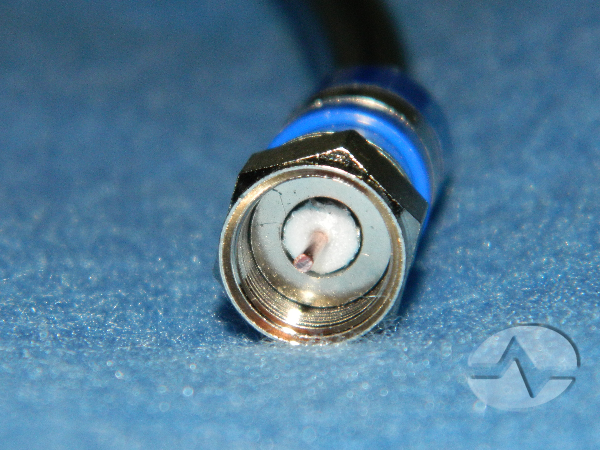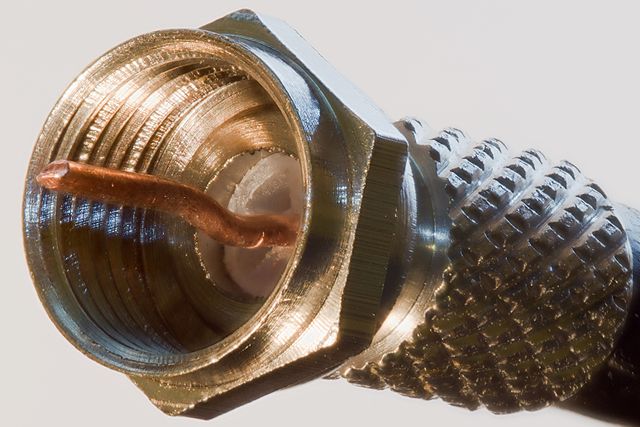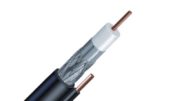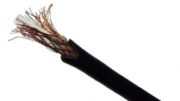The sad thing is, this image comes from Wikipedia, meaning it’s “The” official photo of an F connector in many people’s minds. It’s also about the worst thing you can do to an RG6 cable. I guess that should tell you a little bit about Wikipedia. It’s great that anyone can edit it, but sometimes the edits don’t really make sense.
What’s so bad about this picture?
Putting on an F-connector like this may work out for antenna stuff, but it’s not going to work for cable or satellite. It’s not even really a great solution for antennas, but antennas are more forgiving because of the lower frequency of the signals.
This sort of connector is designed to be twisted onto the end of a cable after you’ve removed a bit of the rubber sheath, presumably with a jackknife or something. That’s the first clue: you should always use the right tools for the job and a jackknife is very rarely the right tool for the job.
What happens when you use a twist-on connector
Twisting a connector onto the end of RG6 cable is going to torque all those little wires in the braid on the outside of the connector and that’s going to hurt you, I promise. It may not hurt you today, but sooner or later it is going to hurt you.
If you look at this photo, it also looks like someone cut the center conductor with a pair of pliers or something, which is also a total no-no. You should always use tools designed for cable preparation rather than something that you use to pull off rusty bolts. Whether it’s antenna, satellite or cellular boosters, you really need to put proper compression ends on the cable or at the very least buy cables that are pre-made to the specifications you’ll need for the task at hand. Not every job requires quad-shielded, plenum-rated RG6 with compression connectors, but every job can use top quality cable and it seems to me that if you’re planning to leave an installation in place for a while you really owe it to yourself to do it right.
You will find twist-on F connectors at your local hardware store and you may think that they are a great alternative to learning how to put on compression connectors. Just don’t do it. Seriously.
A properly installed connector

This connector was attached by our Solid Signal team. It has all the hallmarks of a properly prepared F connector, like:
Compression connector
Compression connectors are always recommended for any RG6 cable installation. They keep water from getting into the connector and provide a tight, permanent fit. A properly installed hex crimp is just as good but it’s very hard to get those right. It’s easier to do compression, especially if you have the right tools.
Dielectric properly aligned
The white dielectric is exactly aligned with the inner edge of the connector. The sheath around the dielectric is visible but doesn’t protrude into the connector.
Center conductor is straight and does not go past the connector
A nice straight center conductor will make connections more secure. Making sure it doesn’t protrude past the connector will make sure there is no strain on the connector when it’s properly connected.
Outer braid is not visible
You should not see the outer braid anywhere protruding past the connector.
Get the tools you need
The tools you need are all available when you shop at Solid Signal. It’s also the best place to get compression connectors and bulk cable. Shop now!





